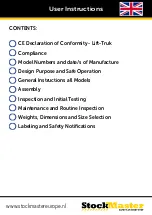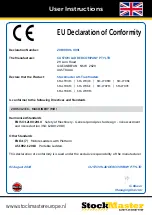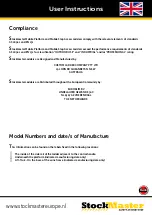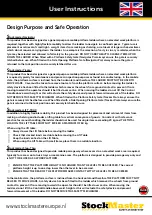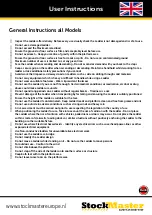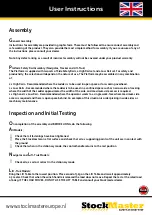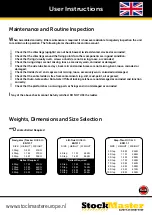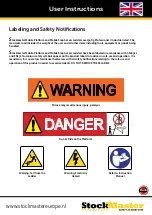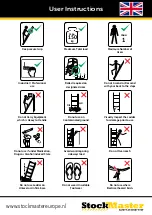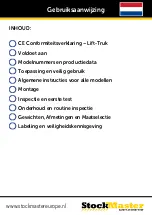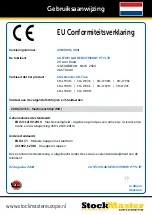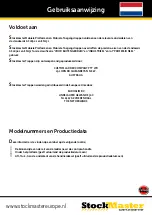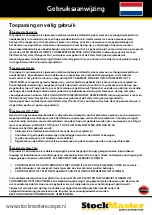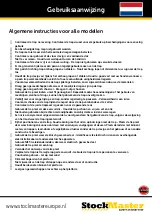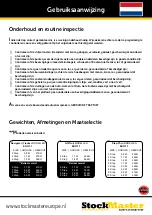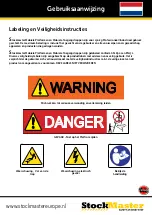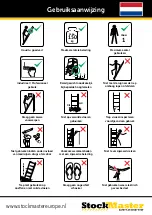
User Instructions
www.stockmastereurope.nl
Inspection and Initial Testing
O
n completion of the assembly and BEFORE USING, do the following
A
ll Models;
·
Check that all fastenings have been tightened.
·
Place the Stockmaster on a flat surface and check that all 4 x supporting points of the unit are in contact with
the ground
·
Check that when in the stationary mode, the control handle returns to the rest position
N
avigator and
L
ift -Truk Models;
·
Check all 4 x castor’s retract in the stationary mode
L
ift -Truk Models;
Bring the Lift Table to the lowest position. Place a load of 5kg on the Lift Table and raise it approximately
0.3 meter. Check that when the winch handle is released the load does not move. Repeat the test at the rated load
of 60kg. IF THE LOAD MOVES, DO NOT USE THE LIFT TABLE and consult your Stockmaster dealer.
G
eneral Assembly:
Instructions for assembly are provided in graphic form. These must be followed to ensure correct assembly and
safe working of the product. They also provide the most simple method for assembly. If you are unsure of any of
the instructions, please consult your dealer.
Note: Any defect arising as a result of incorrect assembly will not be covered under your product warranty.
P
latform Safety Rail Assembly: (Navigator, Tracker and Lift-Truk)
The Platform is supplied with two sets of Side Safety Rails, a High Rail set and a Low Rail set. For safety and
productivity, the selection will depend on the nature of use. The Platform may be assembled in any combination
of;
2 x High Rails - Recommended where the Ladder is to be used in open space or for working overhead.
2 x Low Rails - Recommended where the Ladder is to be used in a confined space such as narrow aisle of racking
where the width of the Ladder approximates the width of the aisle, and maximum side access is required.
1 x High and 1 x Low Rail - Recommended where the operator works to a single work-face where maximum side
access is required and there is open space behind. An example of this situation is order picking in wide aisles or
machinery maintenance.
Back


